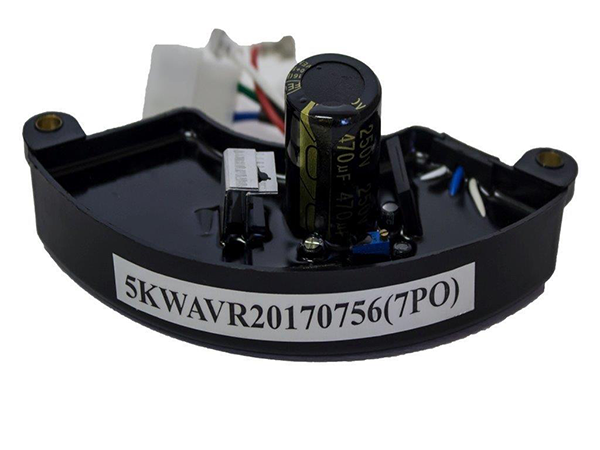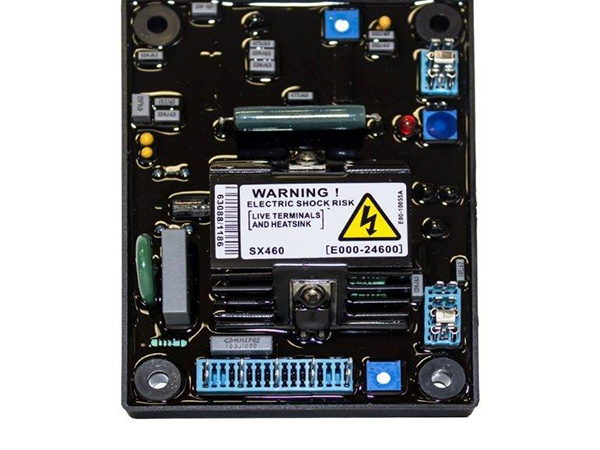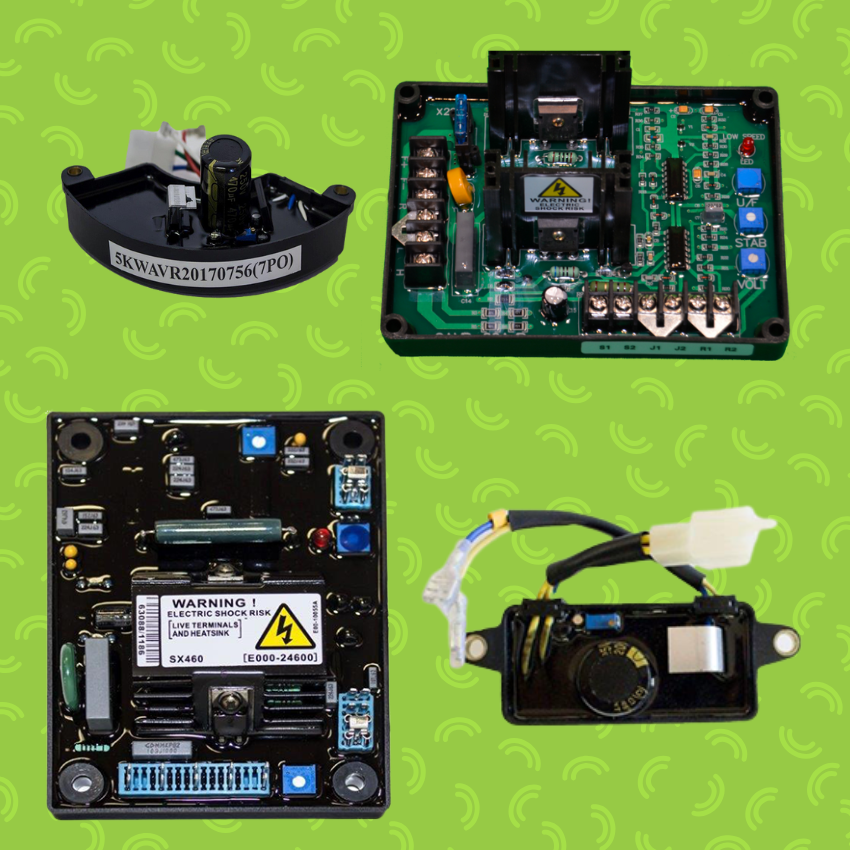In the world of power generation, reliability is everything. Whether you’re running a backup generator for your home during load shedding or powering heavy industrial machinery, one small but mighty component ensures your equipment stays safe and efficient: the Automatic Voltage Regulator (AVR). If you’ve ever wondered, “What is an AVR?” or why it’s crucial for your generator, you’re in the right place. In this comprehensive guide, we’ll break down everything you need to know about AVRs, from their core functions to real-world applications. Plus, if you’re in South Africa and hunting for high-quality generator AVR options, we’ll spotlight where to find them in stock—right here at Generator Parts.
What Does AVR Stand For? Understanding the Basics
AVR stands for Automatic Voltage Regulator, a vital electrical device designed to maintain a constant voltage output from your generator, no matter the fluctuations in load or engine speed. Generators produce alternating current (AC) power, but without regulation, voltage can spike or drop unpredictably—leading to damaged appliances, inefficient performance, or even complete system failure.
At its heart, an AVR is like a vigilant guardian for your power supply. It constantly monitors the generator’s output voltage and makes real-time adjustments to keep it stable, typically within a tight tolerance of ±1%. This stability is especially important in environments with variable loads, such as construction sites, farms, or urban homes relying on standby generators.
How Does an AVR Work?
To grasp “what is an AVR and how does it function,” let’s dive into the mechanics. An AVR operates on a feedback loop system:
- Sensing Phase: The AVR uses a sensor (often a voltage transformer) to detect the actual output voltage from the generator’s alternator.
- Comparison: It compares this reading against a preset reference voltage—the ideal level for your system.
- Adjustment: If there’s a discrepancy, the AVR signals the alternator’s excitation system (usually via brushes or slip rings) to increase or decrease the magnetic field strength. This tweaks the voltage without manual intervention.
Most modern AVRs are solid-state devices, meaning they use electronic components like transistors and microchips for precision and durability. Brushless AVRs, for instance, eliminate physical brushes to reduce wear, while brush-type models offer compatibility with older generators.
In essence, an AVR prevents the “wild swings” that raw generator power can produce, ensuring clean, consistent electricity that protects sensitive electronics like computers, medical devices, or industrial controls.
Why Are AVRs Important for Generators?
Generators without an AVR—known as non-AVR or universal models—can work for basic lighting or tools, but they’re risky for anything more demanding. Here’s why investing in a quality AVR for generator is non-negotiable:
- Equipment Protection: Voltage surges can fry motors, burn out bulbs, or corrupt data on digital devices. An AVR caps these risks, extending the lifespan of your connected gear.
- Efficiency Boost: Stable voltage means your generator runs at optimal RPMs, saving fuel and reducing emissions—key for eco-conscious operations or cost-cutting in agriculture and manufacturing.
- Compliance and Safety: In South Africa, where power outages are frequent, regulations like SANS 10142-1 emphasize stable electrical systems. AVRs help meet these standards, preventing fires or shocks from unstable power.
- Performance in Variable Conditions: From dusty farms to humid coastal sites, AVRs handle environmental stresses, ensuring your diesel generator AVR performs reliably.
Without one, you might face frequent breakdowns or voided warranties. Think of it as insurance for your power setup—affordable peace of mind.
Types of Automatic Voltage Regulators
Not all AVRs are created equal. They come in various types to suit different generator sizes and applications:
- Brush-Type AVRs: Affordable and common in smaller units (e.g., 2-10kW). They use carbon brushes for excitation but require occasional maintenance.
- Brushless AVRs: Ideal for larger, industrial generators (10kW+). They rely on residual magnetism, minimizing wear and downtime.
- Half-Moon AVRs: Compact, rounded designs for space-constrained installs, often in single- or three-phase setups.
- Brand-Specific Models: Compatibles like Stamford SX460GP or Leroy-Somer R230GP mimic OEM parts for seamless upgrades.
Power ratings range from 2kW for home backups to 20kW+ for commercial use, with single-phase for residential and three-phase for heavy-duty needs. Choosing the right generator voltage regulator depends on your alternator’s specs—always match voltage, phase, and kW capacity.
Common AVR Issues and Troubleshooting
Even the best AVR generator can hiccup. Watch for signs like flickering lights, erratic speed, or over/under-voltage alarms. Causes? Faulty wiring, overloads, or a failing AVR itself.
Quick fixes:
- Check connections and clean contacts.
- Test with a multimeter for steady output.
- For persistent issues, consult a pro—DIY on high-voltage systems is risky.
Regular maintenance, like annual inspections, keeps your AVR humming. Pro tip: Pair it with a circuit breaker for double protection.
Shop AVRs in Stock at Generator Parts: Your One-Stop South African Supplier
Ready to power up? Generator Parts, South Africa’s premier destination for generator parts, has a full stock of premium AVRs ready to ship. As a trusted supplier of diesel engine spares, circuit breakers, and more, they cater to everyone from DIY homeowners to industrial pros. All products meet OEM standards for durability and fit.
Browse our extensive Automatic Voltage Regulators collection here and discover options starting at just R186.30. Highlights include:
| Product Name | Price (Incl. VAT) | Best For |
|---|---|---|
| 2KW Single Phase Automatic Voltage Regulator – Small Generator | R186.30 | Home backups |
| GAVR-8A Automatic Voltage Regulator | R231.10 | Universal small gensets |
| 5KW Single Phase Automatic Voltage Regulator – Small Generator | R302.06 | Light commercial |
| 5KW 3Phase Half Moon Automatic Voltage Regulator | R302.06 | Three-phase starters |
| SX460GP Automatic Voltage Regulator | R368.00 | Stamford-compatible |
| R230GP Alternative Leroy-Somer Automatic Voltage Regulator | R590.71 | Leroy-Somer upgrades |
| AS440GP Alternative Stamford Automatic Voltage Regulator | R855.63 | High-end industrial |
Some of our popular AVRs
Multiple Ways to Shop with Generator Parts
Generator Parts makes it effortless to snag your AVR voltage regulator:
- Online via Website: Head to https://generatorparts.co.za for easy browsing, secure PayFast/EFT payments, and order tracking.
- iOS App: Download the revamped Generator Parts app on the App Store. Enjoy smart search, modern design, and precise shipping quotes—perfect for on-the-go pros.
- Android App: Grab it from the Google Play Store for the same seamless experience, now with improved performance and secure checkout.
- In-Store Pickup: Visit their warehouse at 79 De Beer Street, Alrode South, Johannesburg, 1451. Chat with experts, inspect stock, and avoid shipping fees.
With the new app launch, shopping for generator AVR parts has never been smoother—addressing old pain points like clunky search and vague costs.
Final Thoughts: Stabilize Your Power Today
So, what is an AVR? It’s the unsung hero keeping your generator—and your life—running smoothly. From protecting your kit to slashing downtime, a reliable Automatic Voltage Regulator is a smart investment for any power setup.
Don’t wait for the next outage. Stock up on AVRs from Generator Parts today and experience stable power like never before. Subscribe to their newsletter for exclusive deals, or drop into the Johannesburg store for personalized advice. Your generators will thank you.




